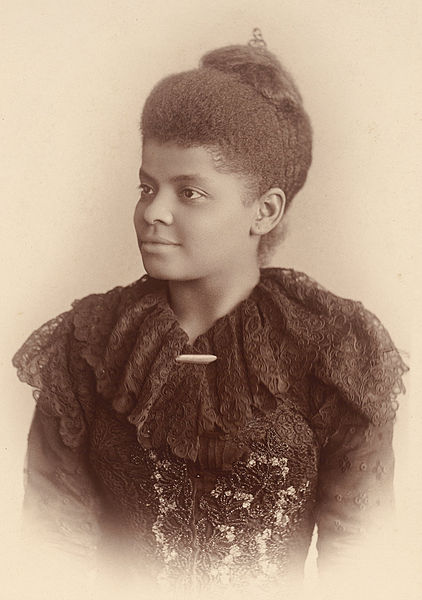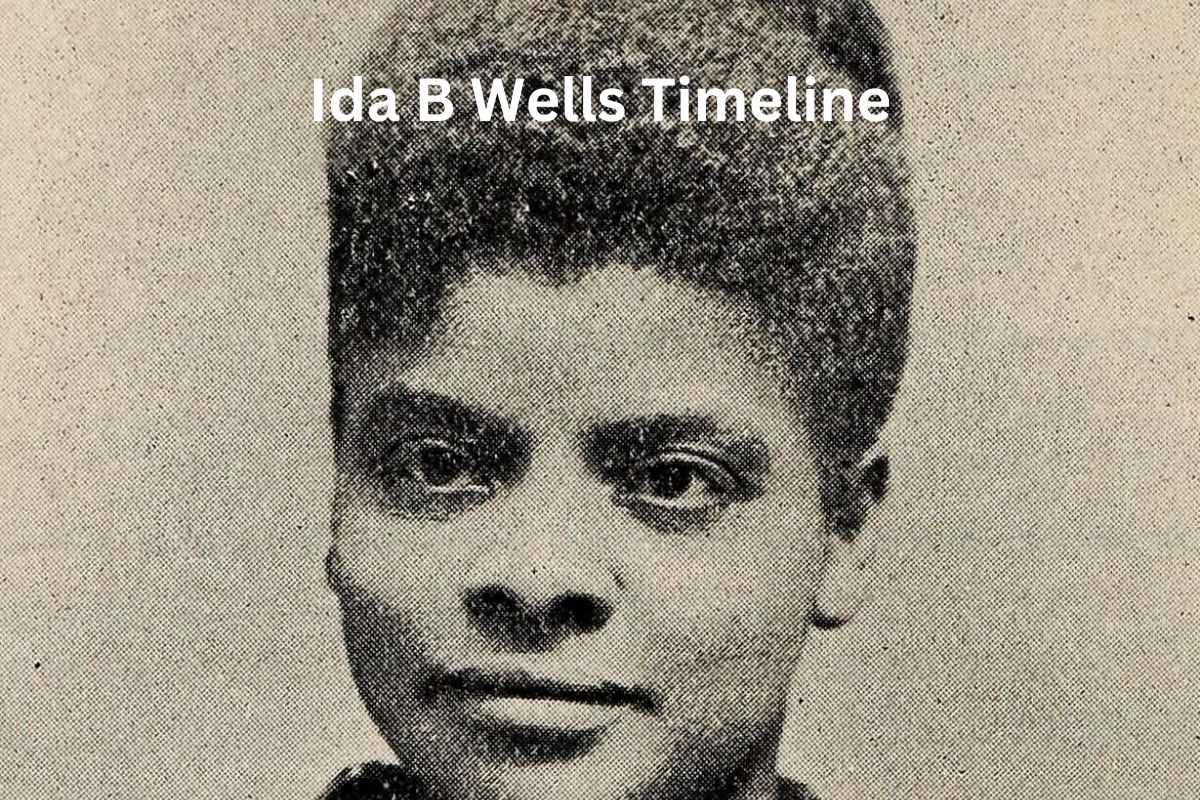Ida B. Wells (1862-1931) was an influential African American journalist, civil rights activist, and women’s rights advocate.
Born into slavery, Wells emerged as a prominent figure in the late 19th and early 20th centuries, fearlessly challenging racial injustice and discrimination.
Through her powerful writings, speeches, and activism, she became a leading voice against lynching and a staunch advocate for equal rights.
Wells-Barnett’s unwavering dedication to justice and equality continues to inspire generations and solidifies her place as a trailblazer in the fight for civil rights and social progress.
| Year | Event |
|---|---|
| 1862 | Ida B. Wells is born on July 16th in Holly Springs, Mississippi |
| 1878 | Her parents and one sibling die in a yellow fever epidemic |
| 1884 | Wells is forcibly removed from a train for refusing to give up her seat |
| 1889 | She becomes co-owner and editor of the Memphis Free Speech and Headlight newspaper |
| 1892 | Wells publishes “Southern Horrors: Lynch Law in All Its Phases” |
| 1892 | She leaves Memphis due to threats on her life |
| 1895 | Wells marries Ferdinand Barnett |
| 1909 | She helps found the National Association for the Advancement of Colored People (NAACP) |
| 1910 | Wells establishes the Alpha Suffrage Club |
| 1913 | She participates in the Women’s Suffrage Procession |
| 1928 | Wells runs for the Illinois State Senate |
| 1931 | Ida B. Wells-Barnett passes away on March 25th in Chicago, Illinois |
Timeline of Ida B Wells
1862 – Ida B. Wells is born in Holly Springs, Mississippi
Ida B. Wells is born on July 16th in Holly Springs, Mississippi, during the Civil War. She was born into slavery, but the Emancipation Proclamation issued in 1863 by President Abraham Lincoln declared that enslaved people in Confederate territories were to be set free.
Also Read: Facts About Ida B Wells
This meant that Wells and her family were technically freed, although they still faced significant challenges and discrimination in the aftermath of slavery.

1878 – Her parents and one sibling die in a yellow fever epidemic
Tragedy strikes when Ida’s parents and one of her siblings die in a yellow fever epidemic that swept through Holly Springs.
Also Read: Accomplishments of Ida B Wells
At the age of 16, Wells takes on the responsibility of supporting her remaining siblings and becomes a teacher to earn an income. This experience exposed her to the inequalities and injustices faced by African Americans in the post-Civil War South.
1884 – Wells is forcibly removed from a train for refusing to give up her seat
Ida B. Wells boards a train in Memphis, Tennessee, and purchases a first-class ticket. However, despite having a valid ticket, she is forcibly removed from the train for refusing to give up her seat in the designated “white-only” section.
This incident deeply affects Wells and serves as a catalyst for her lifelong commitment to fighting racial injustice and discrimination.
It marks the beginning of her activism and her determination to challenge and expose racial inequalities through her work as a journalist and activist.
1889 – She becomes co-owner and editor of the Memphis Free Speech and Headlight newspaper
Following the incident on the train, Ida B. Wells becomes the co-owner and editor of the Memphis Free Speech and Headlight newspaper.
Through this platform, she begins writing extensively about the rampant issue of lynchings and racial violence in the South.
Wells fearlessly exposes the brutal and unjust nature of these acts, highlighting the victims and the systemic racism behind them.
1892 – Wells publishes “Southern Horrors: Lynch Law in All Its Phases”
Ida B. Wells publishes a groundbreaking investigative report titled “Southern Horrors: Lynch Law in All Its Phases.” This report examines the practice of lynching in the United States and exposes the often baseless accusations and violence perpetrated against African Americans.
“Southern Horrors” provides a comprehensive analysis of lynching and challenges the prevalent narrative that lynchings were a response to criminal behavior. The publication of this report brings Wells significant recognition and establishes her as a leading voice against lynching.
1892 – She leaves Memphis due to threats on her life
The publication of “Southern Horrors” and Wells’ outspoken criticism of lynching in her newspaper lead to intense backlash and threats against her life.
Her office in Memphis is destroyed by a mob, prompting her to relocate to the North for her safety.
This event marks a turning point in Wells’ life as she becomes an itinerant activist, traveling extensively to raise awareness about the horrors of lynching and to advocate for racial justice.
1895 – Wells marries Ferdinand Barnett
In 1895, Ida B. Wells married Ferdinand Barnett. Ferdinand Barnett was a lawyer and newspaper editor from Chicago. The marriage marked an important personal and professional partnership for Wells as she continued her activism and advocacy work.
Together, they worked to promote social change, fight racial injustice, and advance the cause of equality. Ferdinand Barnett provided support and encouragement to Wells in her endeavors, and their partnership became an integral part of Wells’ legacy as an influential civil rights activist.
1909 – She helps found the NAACP
In 1909, Ida B. Wells-Barnett was one of the founding members of the National Association for the Advancement of Colored People (NAACP).
Alongside prominent civil rights leaders such as W.E.B. Du Bois, Mary White Ovington, and Moorfield Storey, Wells-Barnett played a crucial role in establishing the organization.
The NAACP aimed to fight for the rights and equality of African Americans, focusing on combating racial discrimination, advocating for legal remedies, and promoting social justice.
Wells-Barnett’s involvement in the NAACP further solidified her commitment to civil rights activism and her efforts to address systemic racism in the United States.
1910 – Wells establishes the Alpha Suffrage Club
Building on her commitment to fighting for racial and gender equality, Ida B. Wells-Barnett plays a significant role in the women’s suffrage movement.
She establishes the Alpha Suffrage Club, an organization aimed at encouraging African American women’s involvement in the suffrage movement. The club’s mission is to empower and mobilize African American women to advocate for their voting rights and to address the intersectional issues they face.
Wells-Barnett’s Alpha Suffrage Club becomes a vital force in the women’s suffrage movement in Chicago. The organization organizes voter registration drives, educational programs, and community outreach to raise awareness about the importance of suffrage for African American women.
Wells-Barnett emphasizes the significance of African American women’s political power and the need for their voices to be heard in shaping policies that affect their communities.
1913 – She participates in the Women’s Suffrage Procession
Ida B. Wells-Barnett participates in the historic Women’s Suffrage Procession in Washington, D.C. The procession is organized to advocate for women’s right to vote and is a significant moment in the suffrage movement.
However, despite her active participation, Wells-Barnett is asked to march separately from the white suffragists due to her race.
This exclusion highlights the racial divisions within the suffrage movement and fuels Wells-Barnett’s commitment to addressing racial inequality within the fight for women’s rights.
1928 – Wells runs for the Illinois State Senate
Ida B. Wells-Barnett’s commitment to social change and equality leads her to take a step further in her activism. She runs for a seat in the Illinois State Senate, becoming one of the first African American women to seek public office.
Her campaign focuses on advocating for the rights of African Americans, women’s suffrage, and social justice issues. While she does not win the election, her candidacy serves as a powerful statement and paves the way for future African American women in politics.
1931 – Ida B. Wells-Barnett passes away in Chicago, Illinois
On March 25th, Ida B. Wells-Barnett passes away in Chicago, Illinois, at the age of 68. Her death marks the end of a remarkable life dedicated to challenging racial injustice and fighting for equality.
Wells-Barnett leaves behind an enduring legacy as an influential journalist, activist, and pioneer in the civil rights and women’s suffrage movements.
Her contributions in exposing lynching, advocating for racial equality, and amplifying the voices of marginalized communities continue to inspire generations to stand up against injustice.
